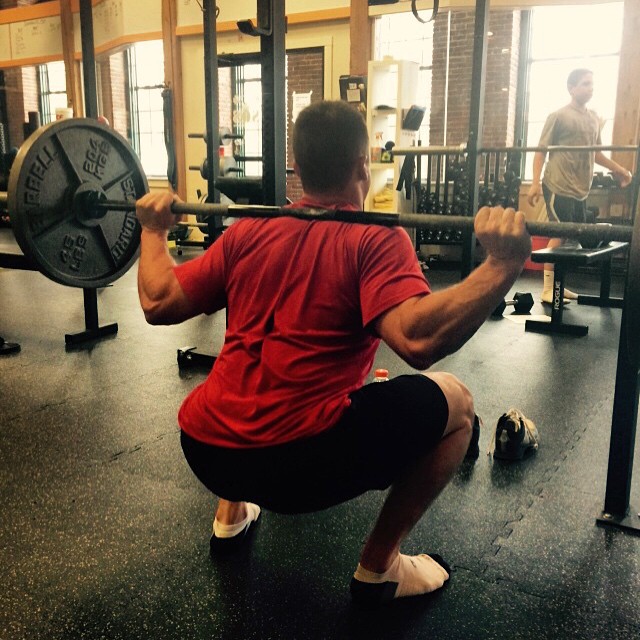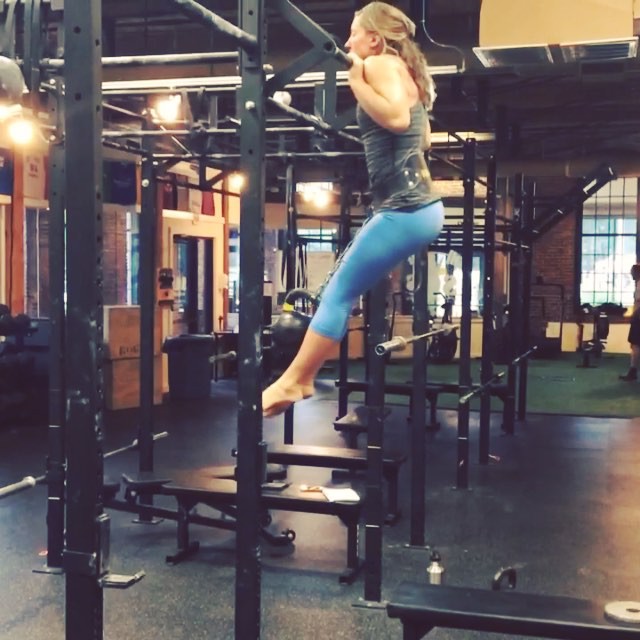Sure, technique will vary from person-to-person, but here’s the way I look at it:
If you were to ask a group of respected strength coaches what they look for in these exercises, hopefully you would get similar answers.
A few side notes…
- This blog could also be called things that annoy me, but they aren’t my clients so it’s not my place to say anything.
- Before I delve into this little rant, I need to be crystal clear that someone with a legitimate medical issue may be excused from some of my ranting.
- Also, I’m not talking about assistance lifts. If I say squat, i’m not referring to a box squat, a hack squat or any other type of squat.
So without further ado…
Strict Pull-ups
I’m not ripping on kipping pull-ups here. Kipping pull-ups are a different skill altogether. Below, I’m referring to dead hang strict pull-ups, either bodyweight or weighted.
{Did you check out the free weighted pull-up program we posted last week?}
Here’s what I call a strict pull-up:
- Start with the dead hang.
- Pull your body up so your throat reaches the bar (at minimum), with a neutral neck.
- Do not flail the rest of your body in some strange attempt to get your throat to the bar. If it looks like you are getting attacked by wasps on the concentric portion of the pull up, you’re probably not doing it right.
- Control the eccentric portion back down to the dead hang and repeat.
Why do I think this is important? Well, Let’s look at the deadlift and compare it, shall we?
If you attempt to pull the bar off the ground, but you never fully lock out your hips and knees, you are only doing maybe 85 to 90% of the work. This would be considered a “no count” in a powerlifting meet.
I look at the pull-up like an upper body deadlift. You need to complete the bottom and the top position to do it “right.”
Squats

I love squatting. When appropriate, I squat pretty much every client I work with.
Whether I use de-loaded squats, goblet squats, double kettlebell front squats or any barbell squat variation, here’s what I like to see!
- Maintain a neutral spine for the duration of the squat. When your spine changes under load, it’s a recipe for trouble.
- Unless there’s a medical reason, you should squat below parallel. This means that the crease in your hip is below your knee joint. I’m basically referring to standards required at a powerlifting meet.
When you squat below parallel with heavy weight, it’s much harder than some of this half-rep nonsense I see a lot. No one cares about a half squat PR.
Push-up

This one is a biggie. It’s pretty awesome when one of your clients can perform perfect push-ups, but what does a full push-up entail?
- When doing push-ups, your body should be in a perfectly straight line with a neutral spine.
- You should perform the push-ups so you’re chest slightly taps the deck.
- Your body should move as one unit.
- You should be in a full lock out position at the top of the push-up.
I’ve seen some pretty ugly push-ups in my day. Some people do push-ups with a very hyperextended spine. Others fold their bodies in half at a right angle. Neither of these are correct.
If you cannot hold a tall plank position, elevated or not, then you should not be doing push-ups. The push-up can be regressed for just about anyone. There is no shame in regressing the push-up, done correctly you will get far more than just upper body work.
Do it right!
Bench Press

Your chest is not a trampoline and there is no need to repetitively bounce the barbell off of your sternum. Instead, unrack the bar with control, lower the barbell to your chest in a controlled fashion, pause slightly, and press the barbell until your elbows lockout. Rinse and repeat.
Again, I like to use the powerlifting standards when pressing because at least it gives some clear-cut standards to adhere to.
Just as we did with pull-ups, let’s compare the bench press to the deadlift. If I drop a barbell that’s loaded up with bumpers and catch it off the rebound, did I actually deadlift it? I think you know the answer!
So there you have it. Let’s have some standards when it comes to weight lifting. If you’re making any of these mistakes, fix ’em!


I get what you are saying here. I see dozens of people at the gym doing things wrong or half-baked. They think they are doing things well. I know that they are not doing it right. But most don’t want to be corrected. They are happy doing things just their own sweet way.